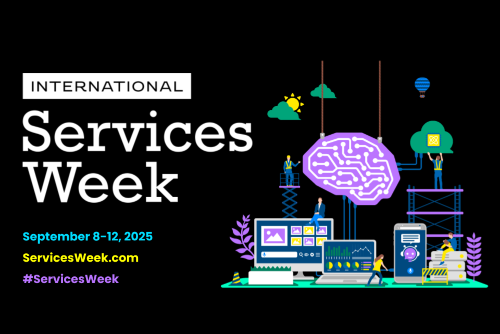Improve your utilization rates and profitability by doing these five things

When it comes to the world of professional services, utilization is often viewed as the key metric to optimize profitable growth. Regardless of the size of your organization, a single percent uptick in your utilization rate has proven to significantly impact the success of your services business. Whether you’re the VP of services, a project manager, resource manager, or consultant, you should know that utilization is critical to your bottom line, and always look for better ways to track it and improve it.
As someone who has been struggling with how to optimize utilization analysis and reporting over the past two decades, here are a few things I have seen make the most impact on boosting utilization and profits for services businesses of all sizes.
1. Make sure your demand and capacity are in sync
You’ll hear this all the time. Having the right team on the right project at the right time is what truly drives success for services organizations. It’s a huge piece of what keeps projects on track, margins in line, and customers happy. But despite the fact that services teams know how important this is, utilizing your bench to solid capacity remains a bit of an enigma for even the most seasoned PSO. The easy answer? Get your sales and services team working with the same data, in the same system, from the same customer record, so everyone involved has a view of current customer projects, staff commitments, and demand pipeline. The sales team will know what service levels they can promise, while the services team can see what’s in the pipeline and allocate the right staff to deliver.
2. Take spreadsheets out of the mix
Resource managers can attest that nothing throws utilization off its axis quite like the chaos of managing resources, conflicting schedules, and a wide-range of billable rates. There are a lot of moving pieces to keep track of – and they all play a part in getting an accurate read on your utilization rate. If you are still using a spreadsheet (or most likely several!) to calculate utilization, it’s time to stop. It is not only extremely time-consuming but also rife with potential errors. And when your margin tracking and profitability rely on that same magical set spreadsheets, you don’t want to get it wrong. Today there are powerful and modern professional service automation (PSA) solutions that make it possible to automate utilization tracking in real time.
3. Invest in real-time data analytics and predictability
Would you turn down a utilization crystal ball? It’s one thing to know how well you’re doing against utilization targets today, but the key to growing your business – and guarding against a downturn – is being able to plan for and hit future utilization targets. The good news is the current world of real-time data analytics and AI has made that possible, and has the potential to completely transform the way that professional services organizations operate across all elements of the business. Instead of manually cobbling together best guesses based on past events, professional services groups can use real-time analytics to deliver insights on what is happening, both in the presentt and the future. This kind of decision making is especially important for managing resources, maintaining profit margins, keeping projects on track, resolving issues and, ultimately, delighting customers. But it goes even deeper with powerful forecasting and predictability functionality. Today’s analytics also empower you to accurately predict what will happen over the course of the year for utilization, backlog, and capacity using scenario-based formulas, delivery curves, and AI-models specific to your organization.
4. Carefully track utilization against profits
It won’t matter if your utilization rate is at an all-time high if your bill rates are going down. The whole point is to maximize your billable hours and be profitable. The problem is that many professional service teams have trouble connecting utilization to bill rates. For example, if you’re targeting 70% utilization, you might ask your sales team to drum up business in order to help meet your goal. If the sales team does that by discounting projects or bill rates, you may meet your utilization goal, but you’ve also squeezed your profit margin to the point where you might have made more money billing full price at 65% utilization. This is another scenario emphasizing how important it is to have sales and services on the same page, using the same financial, demand and capacity data, so services leaders have the real-time data points to thwart this type of situation.
5. Leverage a PSA solution connected to your CRM
A modern PSA solution connected to your CRM system has become a no-brainer when it comes to boosting your utilization figures. Leading industry analyst firms like Gartner, Services Performance Insights (SPI), and Technology Services Industry Association (TSIA), report that when organizations have a PSA solution integrated with a CRM, their utilization is 4% higher than organizations that don’t have the same system in place. If you haven’t explored this option, now is the time. By unifying all the data related to your potential and existing customers, projects, resources, financials, all in one integrated services management application, not only does it make calculating utilization and increasing it easier, but it accounts for every detail – from calendars to target rates to capacity and demand, to forecasting revenue and protecting margins. It’s the smartest move a services leader can make today.
All the hype around utilization is understandable – and without a way to easily and accurately measure and target utilization, the metric doesn’t do your company much good. In order for utilization to work its magic, you need to be able to account for all the variables from the micro to the macro level. And if you’re using antiquated processes and technology, these variables are just getting lost in the formula fields of some spreadsheet.
Recent Articles
Maximize your Salesforce investment with Certinia






